One-on-One with Brad Turner
Published26 June, 2024
Photo credit Patrick Leung
Meet Brad Turner, an instructor in Capilano University’s Jazz Studies program.
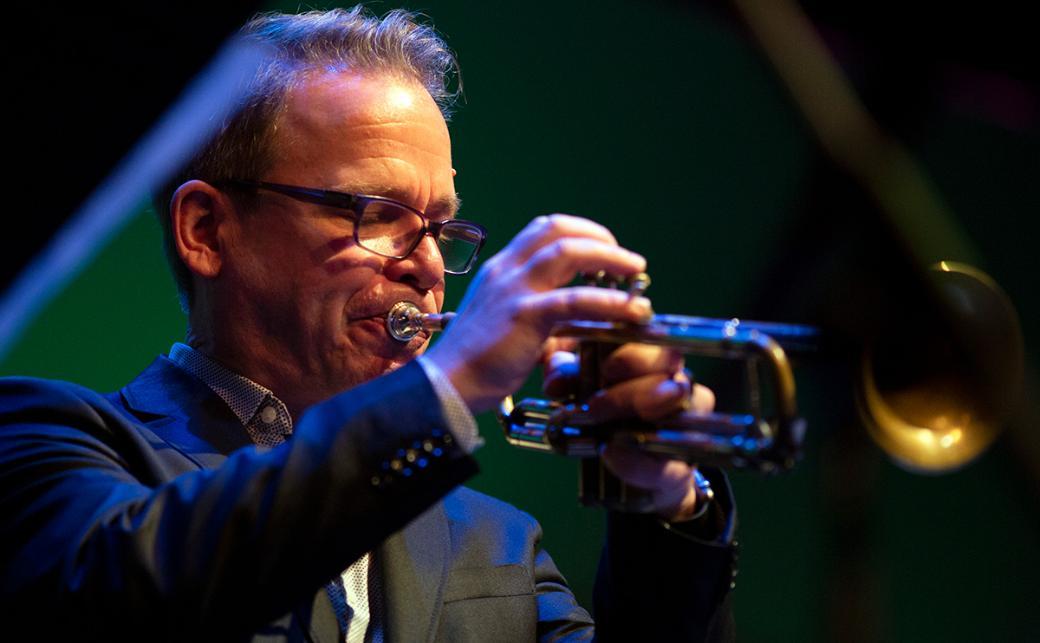
Brad Turner (M.Mus., University of North Texas, 1992) is a renowned Canadian jazz musician, trumpeter, pianist, drummer and composer.
He has released 10 albums, eight as a trumpeter with the Brad Turner Quartet and two with his trio as a pianist. As a founding member of the multiple Juno Award-winning group Metalwood, he has released six albums.
In this interview, we explore Turner’s jazz music career, future aspirations and his approach to teaching.
Tell us how you got into jazz music.
I am from a musical family. My dad and granddad were band directors, so I grew up surrounded by music. I spent a lot of time listening to music on my parents’ stereo. Some jazz records started making their way into the collection, and I was quite interested in those.
I was 10 when I started playing trumpet in 1977. I’d heard Miles Davis playing on one of my records, and it captured my imagination.
I also heard a great trumpet player, a Canadian named Guido Basso, playing on a brass record. I made the connection between my trumpet and the sounds I was hearing on those records and thought I might want to try and pursue that.
Describe your journey at CapU.
I’ve had a long association with this school. I started working at CapU in 1992, teaching trumpet students. I taught here through the 90s, and it was exciting because I was only 25 when I started teaching people who were just a few years younger than me.
I took a break around the millennium to focus on performing. But life happened – I became a parent, and in 2008, I returned to teaching here.
I’ve expanded my role beyond trumpet teaching. Now I direct ensembles, teach improvisation and have conducted here. It’s a fulfilling job that complements my life as a performer. I couldn’t ask for a better setting.
The students are fantastic. I get to play music all the time. My experience here has evolved from a humble beginning to a multifaceted existence in this program.
What is your most memorable performance?
My favourite and most important performance, the pinnacle of my career, happened here at Capilano University.
It was on September 19, 2001. Just think about that date, it was a week after September 11th. Joe Lovano, the great jazz saxophonist, and his partner Judy Silvano came here and played with my quartet.
We performed in our wonderful BlueShore Theatre in the Birch Building. I got to play with one of my heroes and my bandmates that I’ve played with since ‘93. I still think of it like it happened yesterday.
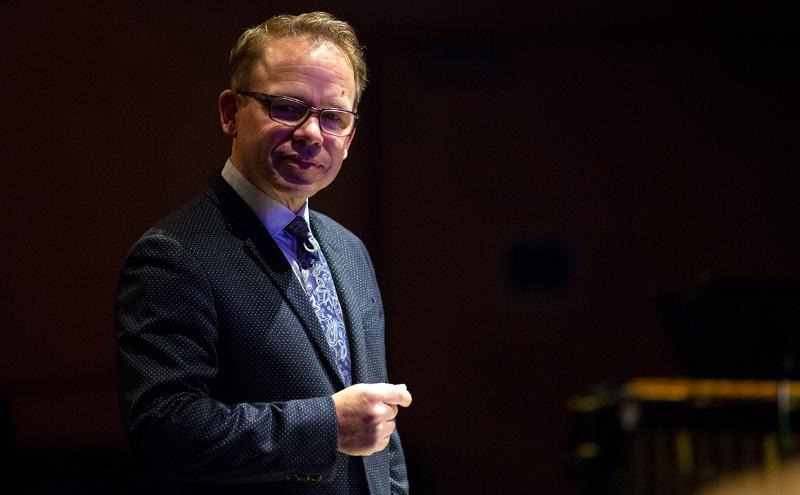
What challenges do you face in your career and how do you overcome them?
My biggest challenge is to somehow remain in a state of learning, which involves remaining humble.
You can’t learn if you can’t look at yourself and assess what could use some help and what’s doing all right.
It’s important not to get too satisfied with what we’ve achieved in the rearview mirror. It’s about exploring what’s new and collaborating with other musicians.
Sometimes I find myself retreating into my own thoughts, which can be a challenge. I want to make sure that I’m out there and part of my community.
As long as I’m keeping my calendar in small chunks, not trying to think too far ahead, and focusing on what’s in the immediate future, I seem to keep my little boat afloat.
Walk us through your process of arranging a jazz piece.
My process has a lot to do with how my imagination works. I try to capture little ideas that fly through it in the moment.
Everyone’s the same – you’ll be driving in your car, humming something or getting a tune stuck in your head. Often, these ideas disappear into the universe, but I must catch them.
Usually, it’ll be a melody or a little rhythm. Sometimes, I’ll sing it all the way home so I can write it down. I collect these little tidbits without forcing myself to write a full piece right away. I just want interesting “words,” so to speak.
Once I’ve collected all these ideas, I start seeing what goes together. I see if any of these little ideas can form a molecule if they’re rigid enough to bear a structure.
I might build a whole tune on top of it, adding melodies or rhythmic development. But it always starts with something that catches my interest, like a little shiny object. That’s how I work.
I collect these ideas to see if they remain interesting to me. If they stay interesting to me, hopefully they’ll be interesting to other people, which is the whole point.
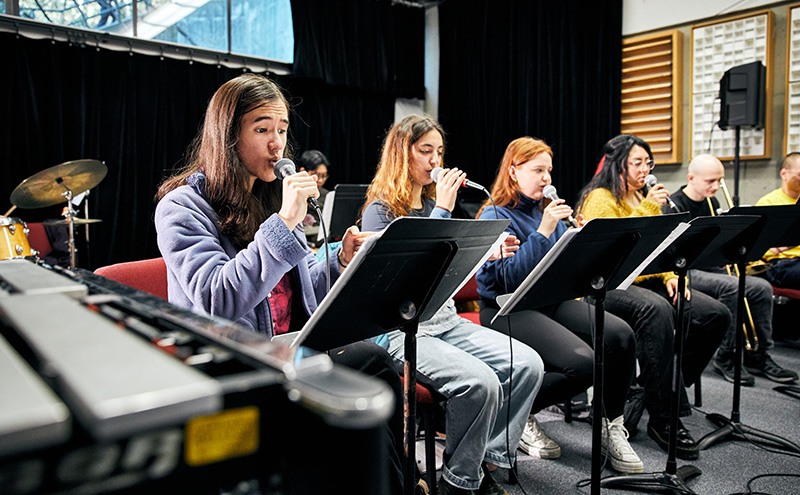
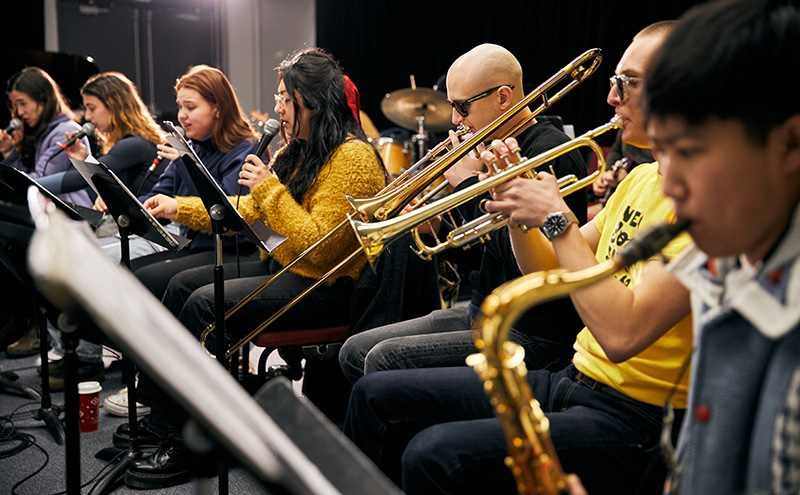
What are some important things you want students to know about jazz music?
I stress to my students the importance of listening to jazz music. We didn’t grow up surrounded by this music, so it’s crucial to immerse ourselves in it.
Access to all recorded music has become easier, but ironically, it’s harder to focus on anything specific.
We need to understand its history and study our instruments, perhaps by focusing on one or two great artists, often African American artists.
To me, it’s important to learn about the people and the great masters who put this music out there despite resistance, hardship and societal strife.
When people didn’t have a voice, this music was to give them one. In my little corner of the universe, I promote understanding through listening, reading people’s biographies and learning about the human context of this music.
“It’s not just a style of music or a jazzy way of playing. It’s about tradition, people, and humanity. It goes way deeper.”
What are your biggest musical influences?
I was influenced by not only international artists but also local figures, people my age and those older than me. I was particularly interested in people who could play more than one instrument and do more than one thing, like write music, perform it and record it.
My list of influential trumpet players includes the obvious names: Louis Armstrong, Miles Davis, Clark Terry, Dizzy Gillespie, Freddie Hubbard, Tom Harrell, Art Farmer and Ingrid Jensen. On the piano, there’s Chick Corea, Bill Evans, Bud Powell, Thelonious Monk, Mulgrew Miller and Kenny Kirkland.
I would have to be a better drummer to truly list my influences, but I love listening to drummers like Elvin Jones, Philly Joe Jones and Vernell Fournier on the Ahmad Jamal records. The list is huge. I couldn’t even begin to finish it.
What is your life motto?
If you’d asked me that when I was first hired to teach here at 25, it would have been “aim for the top.” I was constantly thinking way far out in front of my skis when I was young.
My life motto now would be the opposite of that: “One day at a time.”
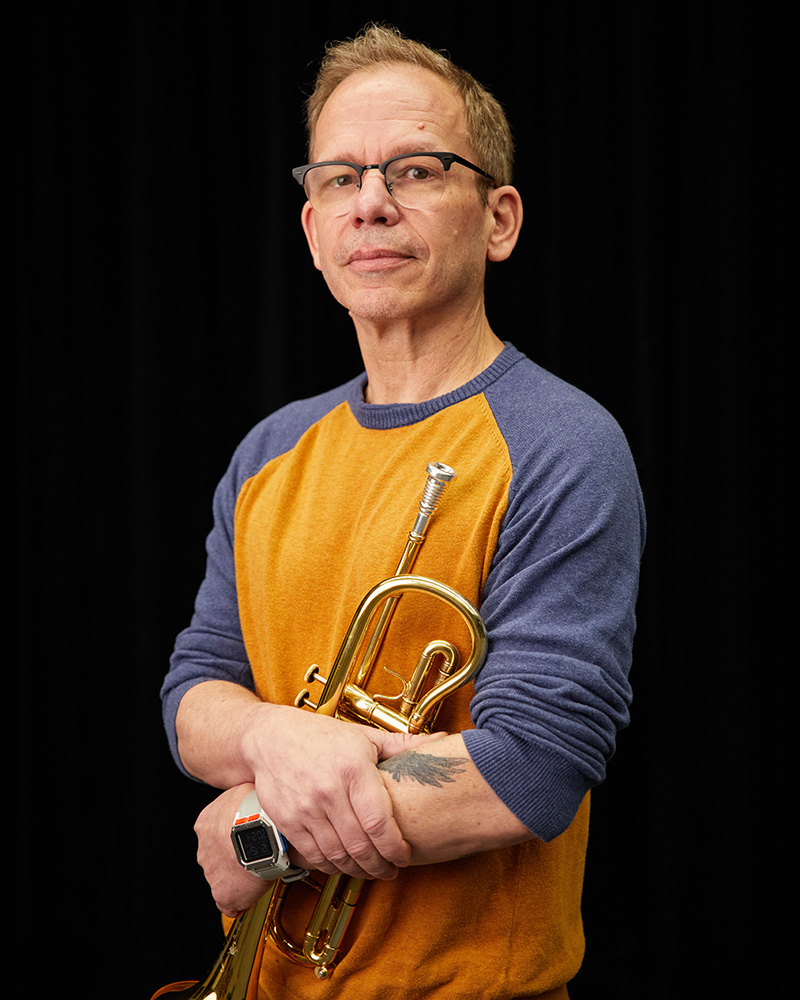
What is something that students might not expect about you?
I love animals. Growing up, I lived on a small hobby farm, where we had cattle, chickens and a pony. I also had a beautiful dog.
I love cars, too. I have an old Mustang that I’ve had since I was 16 years old, a ‘65 red one that I drove to Dallas and back twice, which is ridiculous. That’s something I would not do now – it’s insane.
But as a young person back in my college days, I drove it down to go to school. So, I’m into cars and animals, it’s not just all practicing.
What is your advice to students pursuing music?
Come to grips with your relationship with music first. What is it about music that you love? It’s important, especially for people who study music in post-secondary education, to realize that being an artist is serious. Being a musician is serious because it’s not easy to make your way in life.
We have to make sure our relationship with music is solid and that we’re not just wearing it like a fancy hat. It has to be embedded in us, maybe even tattooed on our souls a little bit.
There has to be something about it that we just can’t get enough of. Make sure you know what that is because, when things inevitably get tricky, that will be the thing that can float us, our rope to hold on to.
Identify what it is that you love about music, get solid with that and then jump in with both feet.



